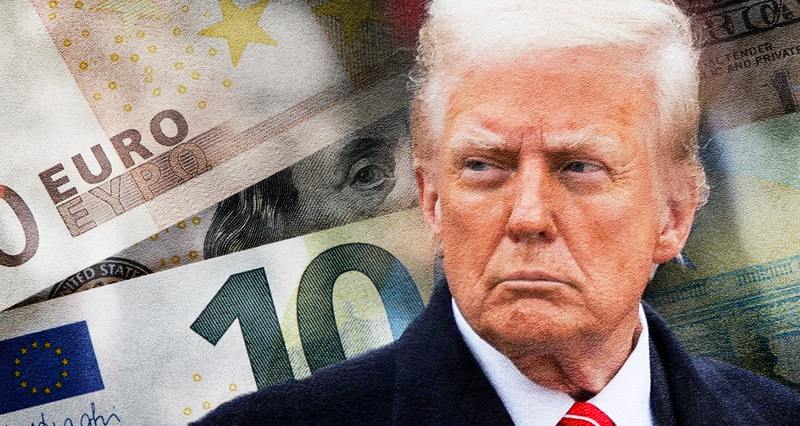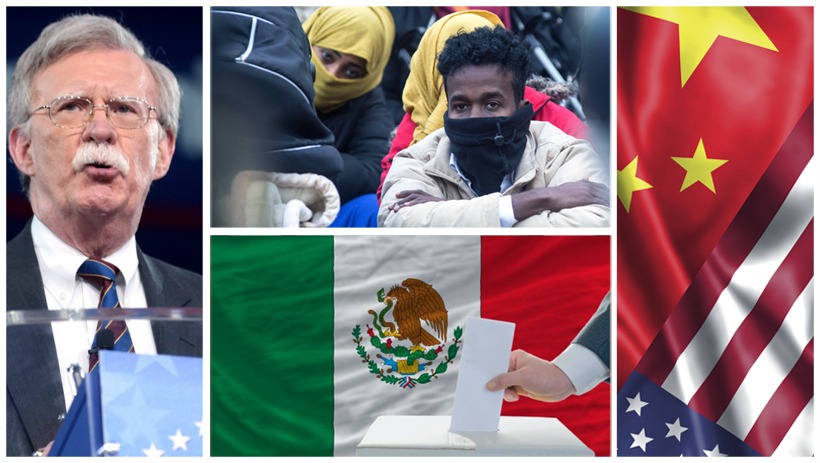The attractiveness of the US Dollar is in decline.
The attractiveness of the US Dollar is in decline.
By Stephan Kaufmann
The US government is launching a new offensive to consolidate the economic foundations of its global power. The planned new budget is intended to make the US a magnet for capital from all over the world. Tax cuts are intended to channel investor money to the United States. President Donald Trump’s “Big Beautiful Bill” costs trillions of dollars and will further increase Washington’s already enormous debt mountain. In doing so, the US government is exploiting one of the foundations of its global power—its creditworthiness—while simultaneously jeopardizing it. Europe sees this as an “opportunity” for the euro.
According to Allianz Research, the fiscal package currently being negotiated in the U.S. Congress costs more than four trillion dollars. About three trillion of this remains unfunded. If the “temporary” tax cuts were made permanent, an additional five trillion dollars in debt would be added over the next ten years. By comparison, the Inflation Reduction Act of Trump’s predecessor, Joe Biden, cost half a trillion dollars, which was financed entirely through tax increases.
Elon Musk: “Disgusting abomination”
The beneficiaries of Trump’s fiscal package will be the wealthy. According to the Tax Policy Center, two-thirds of the tax cuts will go to the top fifth of income earners, a quarter of which will go to the top 1 percent. Low-income households will pay the price, primarily through cuts to health care and food stamps.
Trump’s chief austerity commissioner, Tesla CEO Elon Musk, described Congress’s spending bill as a “revolting abomination” in a social media post—not because of the anti-social measures, but because of the high government spending.
However, US Treasury Secretary Scott Bessent doesn’t see the foreseeable increase in debt as a problem. Trump’s fiscal package will stimulate economic growth, which allows the US to grow out of its debt. Whether this will succeed remains to be seen. What is certain, however, is that “The bill increases debt by trillions of dollars, and at a time when investors are already having doubts about US debt,” explains Allianz Research.
“With or without a fiscal package, the development of US debt is unsustainable in the long term.” – ABN Amro
The US debt ratio is already at 100 percent of gross domestic product (GDP), as high as it was at the end of World War II. The current proposal will push the debt ratio to nearly 130 percent of GDP by 2034. “With or without the fiscal package, the US debt trend is unsustainable in the long term,” says the bank ABN Amro. Trump’s tariff policy, the resulting uncertainty, and the rising debt “are bringing us closer to the point where the markets will no longer accept this.”
So, Trump isn’t being warned about the discontent of the poor, but rather about the discontent of the rich – global financial investors. Washington relies on their trust. Foreign investors currently hold about a third of the $30 trillion in US debt. They are supposed to continue lending money to the US by buying US Treasury bonds, thus financing Trump’s global market conquest program.
New idea: Penalties for capital withdrawal
However, it’s not just the US government’s tariff policy that’s causing concern among them. Ideas circulating in government circles, such as the Miran Plan, are also viewed with unease. According to this plan, the US would pressure foreign creditor countries to extend their loans to the US indefinitely, otherwise the US could withdraw military support.
These are still vague ideas, more like threats. However, the new fiscal package already contains a concrete provision that essentially criminalizes the withdrawal of capital from the United States: Section 899, on “unfair foreign taxes,” provides for punitive levies on individuals, investors, and companies from countries whose taxes Congress disapproves of.
This could include the European Digital Services Tax (DST), which primarily affects American tech giants, or a minimum profit tax provision designed to ensure that multinational companies pay a global minimum tax. The blacklist would likely include most members of the European Union, as well as Australia, Canada, South Korea, and others.
Section 899 provides for a tax surcharge of five percent in the first year, which could rise to a maximum of 20 percent. It would apply to international investors who withdraw their capital gains from the United States, as well as to companies that want to bring the profits of their US subsidiaries back home. “Overall, this is a radical act of tax protectionism,” rages the British “Economist,” “a virtually unprecedented plan to use American tax law as leverage to keep other countries in check.” If this plan were implemented, it would make the United States virtually unattractive to many foreigners.
One currency to bind them all
If global financial investors were to suddenly refuse to lend to the US, however, the United States would not immediately go bankrupt. After all, it is essentially indebted in its own currency, which it can create at any time. “Insolvency due to a lack of capital inflows or the onset of capital outflows is therefore unlikely,” explains Commerzbank. Massive reallocations by foreign investors, i.e., a virtual flight from the dollar, are also unlikely. Besides the US, there is simply no financial market large enough to “repark” the trillions of dollars that would be released.
The financial world is still tied to the US dollar. Nevertheless, doubts about the attractiveness of the USA as an investment destination could lead to Washington demanding significantly higher interest rates on new loans. And that could become a problem. According to calculations by the nonpartisan Congressional Budget Office (CBO) in March, interest costs will already reach a record high of 3.2 percent of GDP this year. This will exceed spending on defense and Medicare. By 2055, 5.4 percent of GDP will have to be spent on interest payments. From 2045 onwards, the average interest rate on debt will exceed the rate of economic growth, according to the CBO, “thus triggering the beginning of a debt spiral.”
Global investors’ doubts about the US government and the dollar are providing hope for the masters of the world’s second-largest currency, the euro. Christine Lagarde, head of the European Central Bank, recently said that the general uncertainty is “less a threat than an opportunity.” Marieke Blom, chief economist at the major Dutch bank ING, also said, “The EU now has a unique opportunity to capitalize on investors’ doubts and promote the euro as an international reserve currency, which would bring significant economic benefits.”
Euro against dollar
The US government’s tariff policy and rising US debt are fueling doubts in the financial markets about the solidity of the US and the dollar. Europe sees this as an opportunity to strengthen the euro’s global role. This would have significant economic benefits for the eurozone.
First, greater demand for euros means lower borrowing costs for governments and companies in the EU. Second, the euro’s positioning as an alternative safe haven for global capital…
To seize this “unique historical moment,” Europe must act quickly and create a product that competes with US government bonds. “It is time to break the taboo of the EU issuing joint debt instruments supported by member states,” Blom said. Joint EU-wide bonds, however, would mean that the eurozone countries would incur debt together. However, the German government, in particular, has so far opposed such a “debt union” because it refuses to assume liability for other eurozone countries in the event of a crisis. As with rearmament, the same applies to EU states when it comes to debt: they can only be world powers together.
Previously published in the Germany daily newspaper Neues Deutschland here.

















Leave a Reply